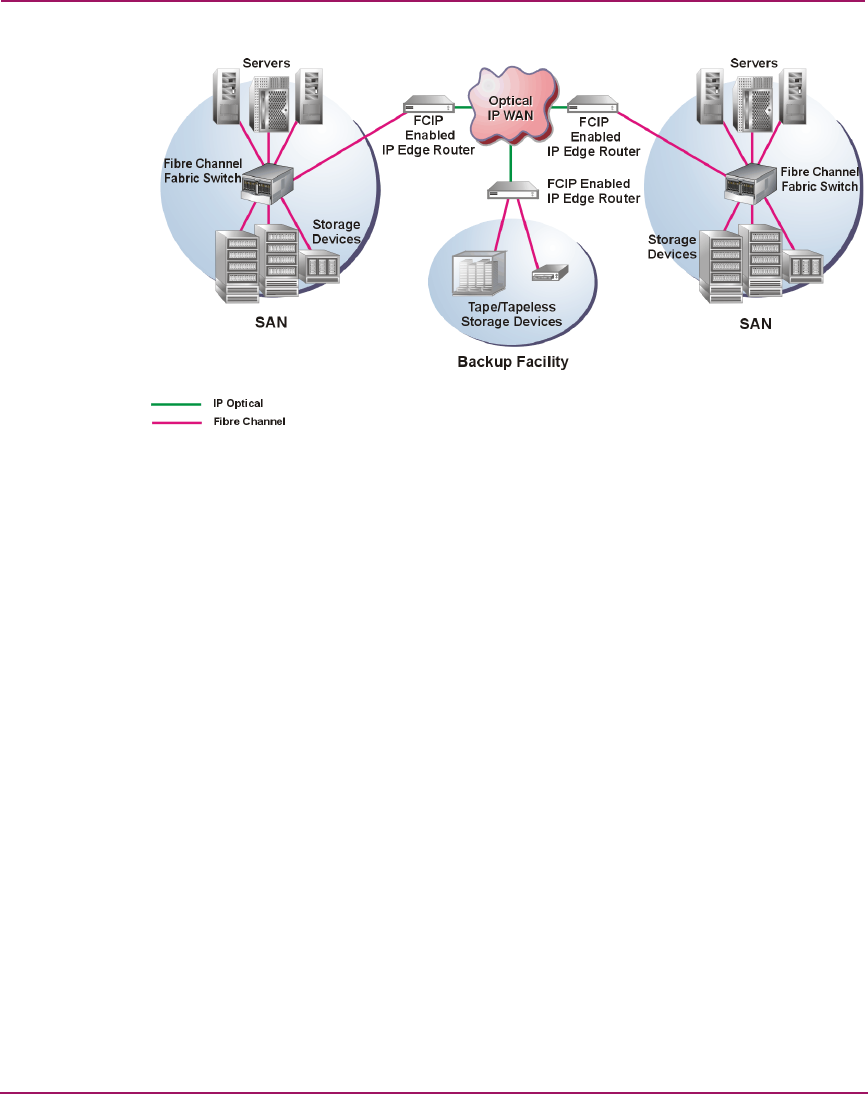FW V06.XX/HAFM SW V08.02.00 HP StorageWorks SAN High Availability Planning Guide (AA-RS2DD-TE, July 2004)
Table Of Contents
- SAN HA Planning Guide
- Contents
- About this Guide
- Introduction to HP Fibre Channel Products
- Product Management
- Planning Considerations for Fibre Channel Topologies
- Fibre Channel Topologies
- Planning for Point-to-Point Connectivity
- Characteristics of Arbitrated Loop Operation
- Planning for Private Arbitrated Loop Connectivity
- Planning for Fabric-Attached Loop Connectivity
- Planning for Multi-Switch Fabric Support
- Fabric Topologies
- Planning a Fibre Channel Fabric Topology
- Fabric Topology Design Considerations
- FICON Cascading
- Physical Planning Considerations
- Port Connectivity and Fiber-Optic Cabling
- HAFM Appliance, LAN, and Remote Access Support
- Inband Management Access (Optional)
- Security Provisions
- Optional Features
- Configuration Planning Tasks
- Task 1: Prepare a Site Plan
- Task 2: Plan Fibre Channel Cable Routing
- Task 3: Consider Interoperability with Fabric Elements and End Devices
- Task 4: Plan Console Management Support
- Task 5: Plan Ethernet Access
- Task 6: Plan Network Addresses
- Task 7: Plan SNMP Support (Optional)
- Task 8: Plan E-Mail Notification (Optional)
- Task 9: Establish Product and HAFM Appliance Security Measures
- Task 10: Plan Phone Connections
- Task 11: Diagram the Planned Configuration
- Task 12: Assign Port Names and Nicknames
- Task 13: Complete the Planning Worksheet
- Task 14: Plan AC Power
- Task 15: Plan a Multi-Switch Fabric (Optional)
- Task 16: Plan Zone Sets for Multiple Products (Optional)
- Index

Planning Considerations for Fibre Channel Topologies
121SAN High Availability Planning Guide
Figure 47: FCIP WAN Extension
FCIP supports existing Fibre Channel SAN hardware and software, while
allowing SAN-connected data to be accessed over an IP network infrastructure.
FCIP allows data to be accessed remotely without altering the SAN fabric and
maintains critically valuable bandwidth, data integrity, and flow control.
Applications appropriate for FCIP include storage-to-storage operations such as
extended Fibre Channel SAN interconnection, data protection, outsourced storage
services, content distribution, and centralized management of distributed
resources.
Planning and implementation FCIP requires available director or switch ports at
the fabric core and installation of an edge switch (Fibre Channel-to-IP gateway)
between the SAN fabric and IP network. A SAN director or switch port
communicates with a remote director or switch port through a protocol tunnel
established by the Fibre Channel-to-IP gateway installed at each end of the
TCP/IP network. The fabric SAN is extended across the IP network, yet Fibre
Channel servers, storage devices, and software are not altered.
iFCP Protocol
iFCP is a TCP/IP-based protocol for connecting distributed Fibre Channel SANs
using an IP infrastructure in place of Fibre Channel switching and routing
elements. The protocol differs from FCIP in that iFCP is a gateway-to-gateway
architecture, while FCIP specifies a protocol tunnel between SAN islands. With










